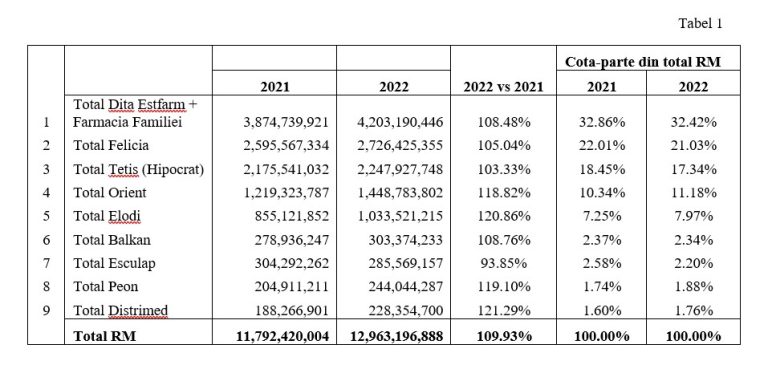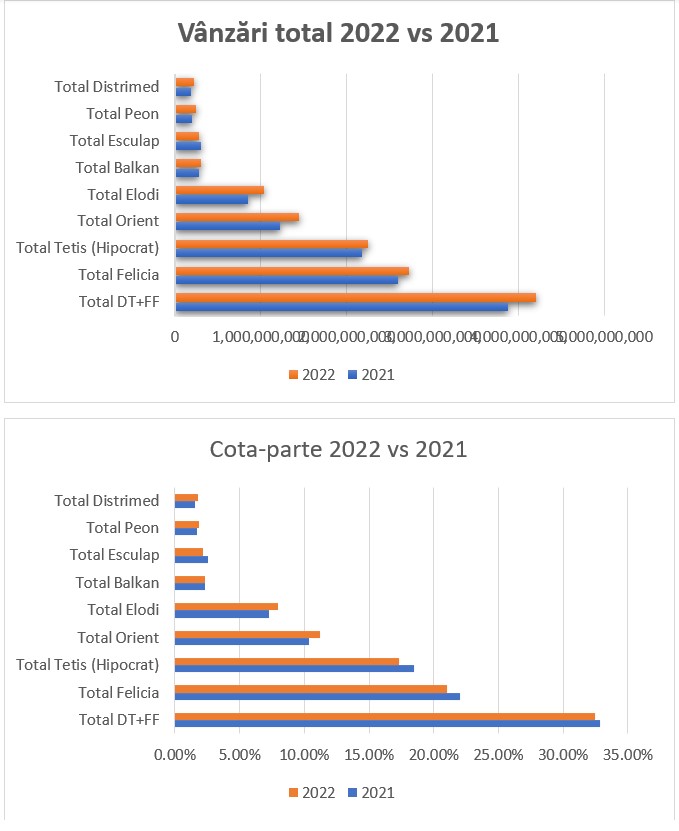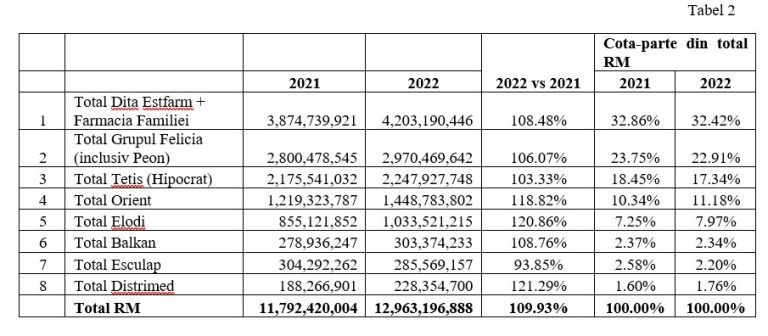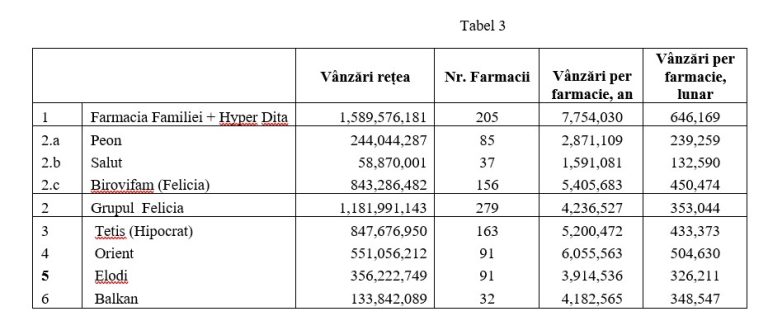The pharmaceutical market in the Republic of Moldova is characterized by some important trends, especially in market share and turnover of different pharmaceutical chains, as well as the distribution of pharmacies in different regions of the country, bani.md reports.
Recently, Felicia Group announced the acquisition of Peon-Farm, which owns 90 pharmacies, saying that this will give it 25% of the retail market.
On the other hand, from public data the Family Pharmacy group and Dita EstFarm have emerged as market leaders, reaching 32.42% share with a turnover of 4.2 billion lei.
The overall growth of the pharmaceutical market turnover in 2022 was significant, registering an increase of 9.93% compared to the previous year. This positive development reflects an increased demand for pharmaceuticals and healthcare services in general, underlining an increased focus on the health and well-being of the population.


Recently, Felicia Group announced the acquisition of Peon-Farm SRL. However, the market analysis by merging the results of Felicia Group and Peon-Farm SRL shows the following:

By comparing the data presented in Tables 1 and 2, it becomes evident that the acquisition of Peon-Farm L.L.C. by Felicia Group has yielded positive outcomes since 2021, extending through 2022. This acquisition not only bolstered the group’s market share. But spurred annual growth. Consequently, Felicia Group’s lead over its closest competitor, Tetis, has widened significantly. Despite these advancements, there remains a notable disparity in pharmaceutical market share between Felicia Group and the largest player, “Dita Est Farm,” amounting to 9.51%, with Felicia Group holding 22.91% compared to Dita Est Farm’s 32.42%.
Moreover, an examination of individual players’ pharmacy performance for 2022 reveals a consistent upward trend in the number of pharmacies despite occasional closures within certain chains. Given the finite nature of physical locations, the most rapid growth stems from acquiring existing chains—a strategy effectively employed by Felicia Group, evidenced by their acquisition of Gedeon Richter’s entire business in 2021 and Peon-Farm L.L.C. in 2024. However, the distribution of pharmacies varies across brands. Notably, Felicia Group, inclusive of Peon-Farm, stands out in terms of pharmacy count. These figures are derived from reliable open sources such as Sanatate Info. It’s worth noting that while Moldova boasts numerous pharmacies, not all citizens have equal access to medication, as indicated by sources like sanatateinfo. md and L.L.C. FARMACIA SALUT (data2b.md).
FOR THE MOST IMPORTANT NEWS, FOLLOW US ON TWITTER!

From Table 3 it can be seen that the lowest average sales per pharmacy are in the Peon and Salut chains. This is easily explained by the positioning of these pharmacies. The clear leader in sales per pharmacy is the Family Pharmacy chain. A top of average monthly sales per pharmacy would look like this:

However, the distribution of pharmacies remains extremely uneven across the country, concentrated mainly in Chisinau municipality. The large number of pharmacies in the capital, which exceeds three times the demographic norm, underlines an overload of the pharmaceutical market in this city and the need for a strategic redistribution of pharmacies to ensure equitable access to pharmaceutical services for the whole population.
Also, half of the total number of pharmacies in Moldova are owned by six major pharmaceutical companies. Most pharmacies are operated by the Farmacia Familiei network – 205 units, followed by Prodiafarm – 163 pharmacies – “Hipocrates” and Birivofarm – 156 pharmacies “Felicia.” These three networks account for a third of the total number of pharmacies in the country, showing a significant concentration of the market in the hands of a few major players.
The next three networks have up to one hundred pharmacies each. 3M-Farm has 91 units under the “Orient” brand, Peon-Farm has 85 “Peon” units and Elodi-Farm – 76 “Elodi” pharmacies.
In conclusion, the pharmaceutical market in the Republic of Moldova in 2022 was marked by the strong performance of some major pharmaceutical chains but by challenges related to the uneven distribution of pharmacies in different regions of the country.



